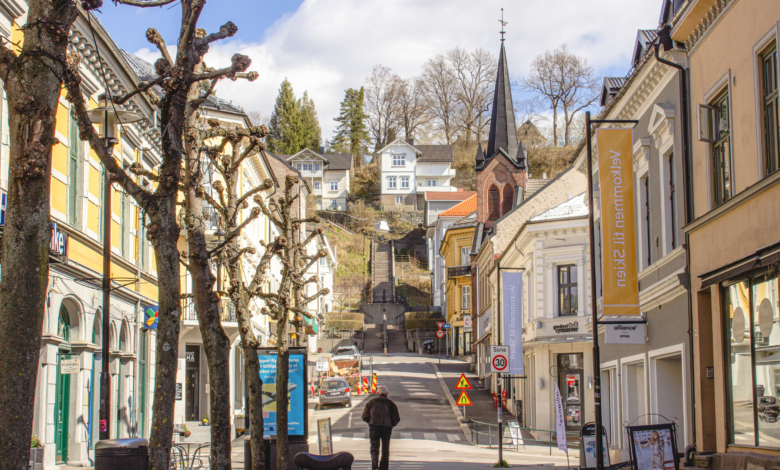Skien by the Sea: A Journey Through Skipene Culture

Nestled in the rich tapestry of Norwegian seafaring culture lies the skipene, a vessel whose very name carries echoes of the sea-spray and gulls’ cries. The skipene has been a symbol of Scandinavian resilience, craftsmanship, and innovation for centuries. In this deep-dive exploration, we chart the trajectory of skipene from historical gems to modern-day relics, unpacking their cultural, environmental, and economic footprints along the way.
The Timeless Craft of Building Skipene
The skipene’s lineage can be traced back to Viking longships, testaments to the ingenuity and artistry of ancient Norse mariners. Over time, as technologies advanced and maritime trade flourished, the construction of skipene evolved to combine historical designs with the practicalities of open-seas navigation. Today, the process of building a skipene remains a labor of love, blending age-old methodologies with contemporary engineering.
Every skipene tells a story — of the wood it was hewn from, the hands that pieced it together, and the families and cargo it bore. Building a skipene is a tradition steeped in patience and precision, requisites for crafting a vessel capable of enduring the unpredictable might of the Northern seas. Carpenters who still build skipene today are bearers of an ancient legacy, working with the same reverence as their forebears.
From Baleen to Black Gold: Skipene in Historical Context
The skipene has been a silent witness to history, its sails buffeted by the winds of change that swept across the maritime landscape. In the age of exploration, skipene carried intrepid adventurers to the far reaches of the globe, their prow slicing the unknown with each nautical mile. In more modern history, skipene played a crucial role in cod and herring fisheries, becoming economic lifelines for coastal communities.
The illustrious past of skipene weaves into the very fabric of local culture, with songs and stories dedicated to the feats and perils of the seafarers who manned them. The baleen trade, particularly, left an indelible mark, contributing to the rise of coastal towns and the development of nascent Norwegian industry. It is this historical gravitas that makes skipene not just a boat, but a repository of collective memory and identity.
Sustainability, Set Sail: Navigating Environmental Stewardship
The environment has always been a silent stakeholder in the existence of skipene. Traditional construction relied on natural materials and was often in tune with the ecosystem. Modern shipyards are veering back to these sustainable practices, harnessing wind and water power to fashion vessels that are not just seaworthy, but earth-friendly.
This renaissance in shipbuilding speaks to a broader trend within the shipping industry, where a premium is placed on reducing carbon footprints and adopting greener technologies. Skipene have become a symbol of this sustainable seafaring ethos, proving that the marriage of tradition and technology can chart a course toward cleaner oceans.
Sail the Seven Fjords: Skipene’s Role in Tourism
The allure of Norway’s fjords draws millions of tourists each year, with skipene offering a unique vantage point to behold these natural wonders. Cruise lines and tour operators recognize the magnetic draw of these vessels, catering to a growing desire for authentic travel experiences that celebrate local culture and heritage.
The economic implications of skipene in the tourism sector cannot be overstated. Local economies not only see a boost from increased tourist traffic but also the preservation of cultural traditions. Skipene become not just vessels of wood and cloth but vessels of cultural exchange, rekindling a pride in seafaring heritage across generations of Norwegians.
Weathering Waves of Change: The Future of Skipene Design
In the face of a rapidly evolving maritime industry, how will the skipene continue to sail forward? Designers and shipbuilders are now exploring innovative materials and propulsion systems to enhance the performance and longevity of these vessels. Digital technologies are being harnessed to craft more efficient and stable designs, while AI and automation could make skipene safer and more manageable on the high seas.
However, an undercurrent of caution must temper these waters of change. The very essence of skipene lies in its cultural and historical significance, characteristics not easily replicated in a lab or workshop. The challenge, then, is to marry progress with tradition in a way that respects the skipene’s legacy without being anchored to the past.
The Siren Call of Skipene
In conclusion, skipene represent much more than boats. They embody the core of Norwegian maritime identity — a connection to the sea that transcends mere transportation. Theirs is a legacy of exploration, sustenance, and storytelling, entwined with the very threads of Norwegian culture. Even as the horizon of skipene’s future broadens with new advancements, it is the undying spirit of the sea and the sailors that will continue to steer their saga. For those ensnared by the siren call of the sea, the skipene stands as a shining beacon, reminding us that our past journeys shape our future adventures. So, let us continue to preserve and celebrate the timeless craft of building skipene, ensuring that generations to come can still hear the echo of their sails billowing in the wind. Let us navigate these changing tides with reverence for tradition and a dedication to sustainability, keeping skipene’s legacy alive on our journey into the unknown. The skipene may have changed



